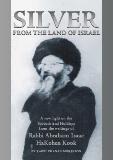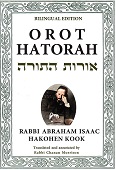
The concluding passage of tractate Berachot teaches a remarkable insight into the nature of peace:
“Rabbi Elazar said in the name of Rabbi Haninah: Torah scholars increase peace in the world. As it says, ‘All of Your children (בָּנָיִךְ) are students of God; great is the peace of Your children’ (Isaiah 54:13). Read this not בָּנָיִךְ — ‘Your children’ — but rather בּוֹנַיִךְ — ‘Your builders'.” (Berachot 64a)
Considering the vast number of disagreements and differences of opinion among Torah scholars, Rabbi Haninah’s statement seems, well, counterintuitive. Do scholars really increase peace in the world? And why did Rabbi Haninah insist that they are “builders”? What does this tell us about scholars and peace?
True Peace
People mistakenly believe that peace in the world means that everyone will share common viewpoints and think the same way. So when they see scholars disagreeing about an issue, this appears to be the exact opposite of peace.
True peace, however, comes precisely through the proliferation of divergent views. When all of the various angles and sides of an issue are exposed, and we are able to clarify how each one has its place — that is true peace. The Hebrew word shalom means both “peace” and “completeness.” We will only attain complete knowledge when we are able to accommodate all views — even those that appear contradictory - as partial perceptions of the whole truth. Like an interlocking puzzle, together they present a complete picture.
When Torah scholars broaden knowledge and provide new insights, they contribute to the increase of peace. We need to recognize that “all of Your children are students of God.” All views, even those that seem contradictory, in fact help reveal knowledge and truth. For this reason, Rabbi Haninah emphasized that scholars are like builders. A building is erected from all sides, using a variety of materials and skills. So too, the whole truth is constructed from diverse views, opinions, and methods of analysis.
Peace and Tranquility
Curiously, the Talmud brings Rabbi Haninah’s observation and then quotes from Psalms:
“יְהִי שָׁלוֹם בְּחֵילֵךְ, שַׁלְוָה בְּאַרְמְנוֹתָיִךְ.”
“May there be peace in your courtyard and tranquility in your palaces” (122:7).
What does this verse add? And what is the difference between peace (shalom) and tranquility (shalvah)?
According to Rabbi Haninah, no talent or study should be ignored. Rather, we need to discern its inner meaning and thus determine its proper place. If there appear to be inconsistencies between different methods, we must seek out their inner kernel. Once we grasp the inner truth in each concept, all conflicts will be resolved, and our wisdom will be expanded and enhanced.
It is precisely this idea that the verse teaches. The verse speaks of two levels: the surrounding grounds, and the inner palace. It specifically uses the word cheil — the fenced-in area surrounding the Temple’s outer courts — to describe the lower level. The Hebrew word chayil means “strength” or “activity.” Thus the first level refers to the realm of life and vigorous activity, which is blessed — not with monotonous sameness — but with a multitude of competing forces. All of this turmoil has value when it leads to a unified goal — “peace in your courtyard.”
The inner palace, on the other hand, is not the place for the clamorous discord of clashing forces. It is the place of quiet wisdom, the source of inner truth for the conflicting views in the outer courtyard. Here reigns a serene understanding — “tranquility in your palaces.”
(Adapted from Ein Eyah vol. II, pp. 397-398)





